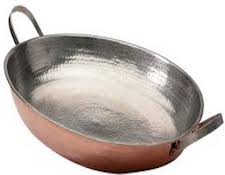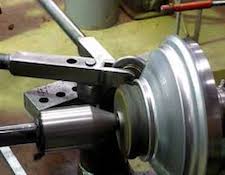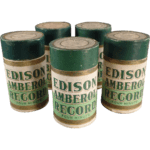It’s the time of year for saving money!
France’s Normandy coast is perhaps best known for the World War II, D-Day invasion beaches. It was along this coastline, spanning some seventy miles, that in June of 1944 the liberation of the European continent began.
 In addition to the numerous invasion museums and other war related sites along the French coast there is the town of Villedieu-Les-Poeles. While slightly inland and not directly on the Normandy coast, Villedieu-Les-Poeles, also known as “the city of copper,” has one interesting distinction – this small town idyllically set in the lush French countryside is home to some of the finest copper cookware available anywhere in the world.
In addition to the numerous invasion museums and other war related sites along the French coast there is the town of Villedieu-Les-Poeles. While slightly inland and not directly on the Normandy coast, Villedieu-Les-Poeles, also known as “the city of copper,” has one interesting distinction – this small town idyllically set in the lush French countryside is home to some of the finest copper cookware available anywhere in the world.
Upon visiting Villedieu-Les-Poeles it is very difficult to miss the large manufacturing site of Mauviel, perhaps one of the best known and certainly among the most respected names in cookware. Mauviel’s plant is a large manufacturing facility that employs several hundred people. Copper, stainless and aluminum cookware are each produced and shipped all over the globe from this plant.
Just a short distance up the road is another manufacturing facility, although on a much smaller scale. Atelier du Cuivre was founded in 1850 and from its inception has been producing copper cookware. However, they also manufacture bowls, bathtubs, sinks, bracelets, bells and most anything the customer may require. In the world of copper cookware, Atelier du Cuivre is highly regarded as one of the world’s best and winds up in some of the most prestigious restaurants and commercial kitchens on Earth, including, quite surprisingly, mine.
 This small shop of about twelve or so people produce all their products by hand. Perhaps the most innovative technology they use is spun metal, also known as spin forming, which is itself a process that has been around for thousands of years. Historical evidence traces the concept of the spun metal process back to the Pharaohs of ancient Egypt. Beyond spun metal, most of the work is done with hand tools.
This small shop of about twelve or so people produce all their products by hand. Perhaps the most innovative technology they use is spun metal, also known as spin forming, which is itself a process that has been around for thousands of years. Historical evidence traces the concept of the spun metal process back to the Pharaohs of ancient Egypt. Beyond spun metal, most of the work is done with hand tools.
Spun metal production begins by vertically mounting a flat metal disc, in this case copper, to a spinning lathe and the machine operator begins to work the disc with a series of cutting tools. Making parts from this process is as much art as anything else. Spun metal is not an automated technology simply requiring the push of an “on” button. This video shows the process in action.
Once the basic shape of the pan or pot is formed, the piece is then lined with either stainless steel or tin. Many professional chefs prefer tin but those will require “re-tinning” at some point depending on the frequency of use. Stainless steel will basically last a lifetime. Lastly, the handle, usually copper but also an available detachable wooden one, is applied. On higher end pots and pans, the rivet that attaches the handle is blind on the inside, or the rivet head is not seen inside the pan, thus making cleaning easier. More standard versions have the rivet all the way through the wall of the pan. While visitors are given a tour of the facility, how the blind rivets are produced is not shared and is a patented, proprietary process.
 When I visited Atelier du Cuivre, and immediately after finishing a twelve-inch sauté pan, the craftsman handed me the finished product and through my Brother as interpreter proudly told me, “with proper care, this pan will last for two hundred years.” Upon asking if I could purchase this specific pan his reply, “mais oui,” needed no translation and he gave a slight bow, turned back to his machine and resumed his work.
When I visited Atelier du Cuivre, and immediately after finishing a twelve-inch sauté pan, the craftsman handed me the finished product and through my Brother as interpreter proudly told me, “with proper care, this pan will last for two hundred years.” Upon asking if I could purchase this specific pan his reply, “mais oui,” needed no translation and he gave a slight bow, turned back to his machine and resumed his work.
I am hopeful the parallel between copper cookware to an audio web site has become obvious.
Much of the equipment in use by modern day audiophiles is handmade by small businesses owned by one individual or a family. The head of the company is oftentimes the designer and in many instances, the products being produced are based on traditional designs that have been the legacy of the company. Or perhaps the design is radically new but created by craftsman that have decades of experience. While new machinery may be on the cutting edge and capable of very high levels of quality, the timeworn practice of superior craftsmanship is no less apparent.
Of course, many and varied variables apply. Still, the fact remains, much of what audiophiles consider as high performance equipment is hand built by small shops, completely dedicated to producing their products with as high a level of quality as possible, given the retail cost.
 It is also true that consolidation and buy outs have changed the landscape of how high performance audio products are made. There now exists any number of companies that while once independent, are now part of a conglomerate of businesses owned by a parent company. I prefer to think that despite this fact, the spirit of that small family owned shop continues.
It is also true that consolidation and buy outs have changed the landscape of how high performance audio products are made. There now exists any number of companies that while once independent, are now part of a conglomerate of businesses owned by a parent company. I prefer to think that despite this fact, the spirit of that small family owned shop continues.
Is my assessment a somewhat romanticized, possibly even myopic view of our industry? Okay, sure, I’ll allow that possibility exists. It doesn’t, however, discount the fact that among all the available stereo components made in the world, high performance audio as a category is essentially handmade and provides the highest level of innovation and craftsmanship of musical playback systems. While the only “cooking” may be the music, the products are certainly considered the best available anywhere in the world.
Parallels such as this exist not only in cookware and audio, but in almost every part of our normal lives. Some may choose mass produced cookware. Others may prefer the audio equivalent of the pan with blind rivets made by smaller companies dedicated to a higher level of craftsmanship. It is with those manufacturers where past meets present in the production of the world’s very best – made by dedicated individuals with a passion for excellence. For audio enthusiasts, all one needs to do is listen to the craftsmanship.








